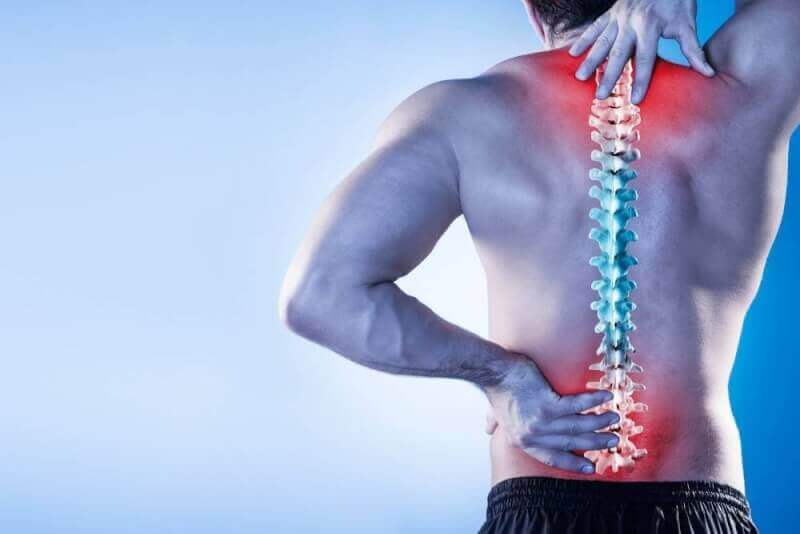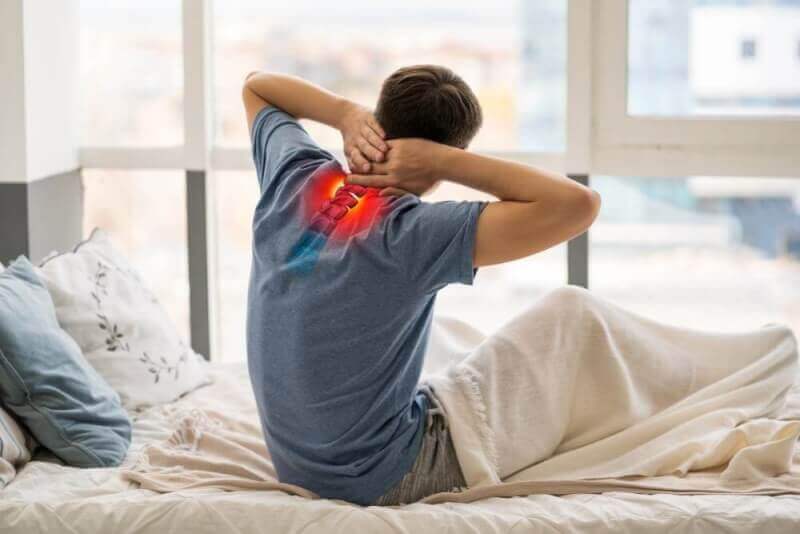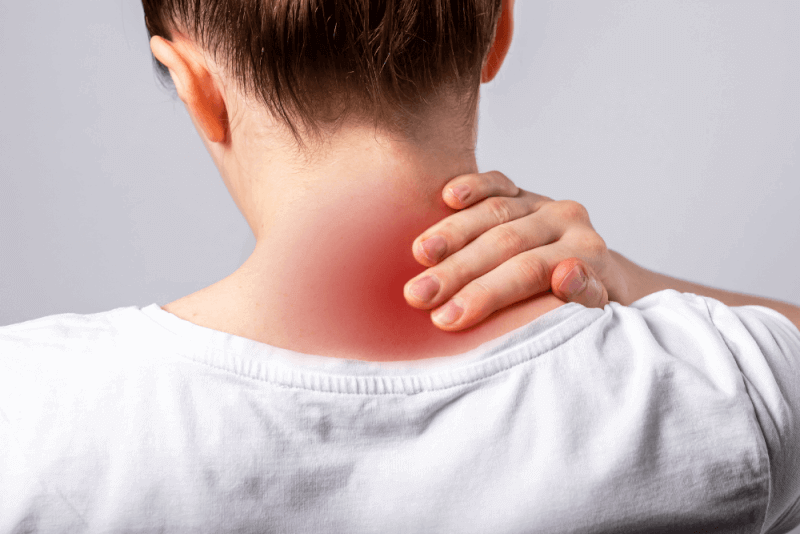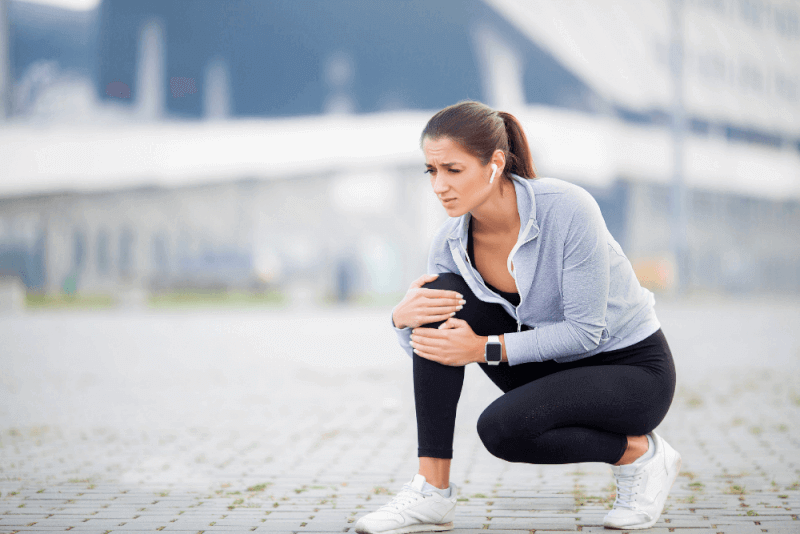30-Second Summary
- Lower back pain can manifest through various symptoms such as pain, stinging, numbness, and discomfort in the lower back area.
- It can have many causes, with the most common being nerve irritation, strain, bone problems, issues with nerve roots exiting the spine, and joint problems.
- Acute back pain lasts less than 6 weeks, while chronic back pain lasts more than 3 months.
- Treatment varies depending on the cause. Acute back pain can often be treated with rest, pain relievers, and physical therapy. Chronic back pain may require surgical intervention.
What is Lower Back Pain?
Lower back pain can be felt in various ways: sharp, dull, burning, or stabbing. Some patients experience localized pain, while others have more diffuse pain. Localized pain is easier to pinpoint, whereas diffuse pain can be more challenging to locate. These pains may occur in episodes and can be mild or severe.
The causes of lower back pain can be varied, including issues related to bones, cartilage, joint capsules, blood vessels, and discs. Sometimes, the exact cause of the pain may not be known. In some cases, even after the factor causing the pain is removed, the pain may persist due to sensitized nerve endings. Additionally, stress can make it more challenging to identify the source of the pain.
Regardless of the tissue causing the pain, the affected tissues may shift or expand. If these changes put pressure on the nerves, patients may experience leg pain, warmth, numbness, and even urinary incontinence.
What is Acute Lower Back Pain?
Almost everyone experiences significant lower back pain at least once in their lives. Acute lower back pain refers to pain that lasts less than 6 weeks. This type of pain can result from trauma or arise independently. About 80% of people with acute lower back pain will fully recover within six weeks. However, approximately 30% of those who experience significant lower back pain may have recurring episodes.
What is Chronic Lower Back Pain?
Chronic lower back pain is defined as pain lasting more than 3 months. Irritation in the tissues around the lower back can stimulate nearby nerve endings, causing pain. Additionally, the body's response, including inflammation and swelling, can contribute to the pain. In chronic lower back pain, blood flow and oxygenation to the area are usually reduced.
These changes in blood flow make it difficult for the body to remove harmful waste products from the area. Therefore, it is essential to carefully investigate the sources of the pain to plan an appropriate treatment.
Lower Back Pain and Activity
People often believe that avoiding daily activities and resting in bed will help alleviate lower back pain. However, especially in the case of acute lower back pain, remaining as active as possible within tolerable limits can help reduce the pain more quickly. Activity increases blood flow to the area, reducing muscle tension and inflammation.
While individuals with lower back pain should avoid competitive sports, heavy lifting, and other strenuous activities, light cardio exercises such as walking are recommended. Applying heat or cold to the affected area can also be beneficial. Heat therapy helps relax the muscles, while cold therapy reduces inflammation. However, the long-term benefits of heat and cold applications for recovery are not fully proven.
Symptoms of Lower Back Pain
The symptoms of lower back pain, a condition almost everyone experiences at some point, can include:
- Worsening with sitting
- Easing with movement
- Limiting movement
- Sharp, stabbing pain in the lower back
- Causing muscle spasms
- Felt in any part of the back, potentially radiating to the hips and legs
Causes of Lower Back Pain
The lower back's functions include movement, structural support, and protection of certain body tissues. Pain in this area can originate from the discs between the vertebrae, the vertebrae themselves, the spinal cord and nerves, the ligaments around the spine, the muscles around the lower back, the skin covering the lower back, or the internal organs in the abdomen.
The most common causes of lower back pain include nerve irritation, strain, bone problems, issues with the nerve roots exiting the spine, and joint problems. Strain refers to the stretching of the muscles or tendons in the lower back for various reasons. This strain can cause micro-tears and damage to the tissues. Strain is considered one of the most common causes of lower back pain.Another common cause is nerve irritation. The nerves exiting the spine in the lower back extend to the skin. Irritation of these nerves for any reason can cause lower back pain, especially nerve inflammation related to shingles, bone problems, and disc disease, which can lead to nerve irritation.Lumbar radiculopathy refers to nerve irritation caused by damage to the discs between the vertebrae in the lower back.
Causes of lumbar radiculopathy include wear and tear on the outer ring of the disc, disc damage, and traumatic injuries.Another cause of lower back pain is bone pressure. Expansion or displacement of the lumbar vertebrae can limit the space required for the spinal cord and nerves, leading to lower back pain.One of the most common causes of lower back pain is bone and joint conditions. These include wear and tear, injuries, degeneration, joint inflammation, and congenital defects.Another cause of lower back pain is damage to the bones and joints. This is particularly common in individuals with osteoporosis and those who have used corticosteroids for extended periods. Arthritis is another cause of lower back pain. Types of arthritis that affect the lower back and hip joints frequently lead to lower back pain.
Treatment Methods for Lower Back Pain
To treat lower back pain, the underlying cause must first be identified. Treatment is then directed at the condition causing the pain. In addition to conventional treatments, patients may also benefit from alternative medicine methods recommended by specialists.
Acupuncture
Acupuncture, which involves inserting thin, stylized needles into specific points on the body to release energy, is one of the effective methods for managing lower back pain.
Spinal Manipulation
Spinal manipulation, performed by experts in the field, is one of the methods that apply pressure to the spine. These manipulations can help correct spinal alignment.
Massage
Massage performed by expert physiotherapists to relax the muscles causing lower back pain is another method used to alleviate the pain.
Yoga
Regular practice of yoga, which includes stretching exercises, is another effective method for relieving lower back pain.
PRP (Platelet-Rich Plasma)
PRP injections are used to relieve lower back pain, especially caused by disc degeneration. PRP injections help speed up the healing process of the discs between the vertebrae.
Prolotherapy Injections
Prolotherapy injections, an alternative medicine method used for over 50 years to treat lower back pain, involve injecting an irritant agent into the body to activate natural healing mechanisms. This process speeds up tissue healing and cell growth.












